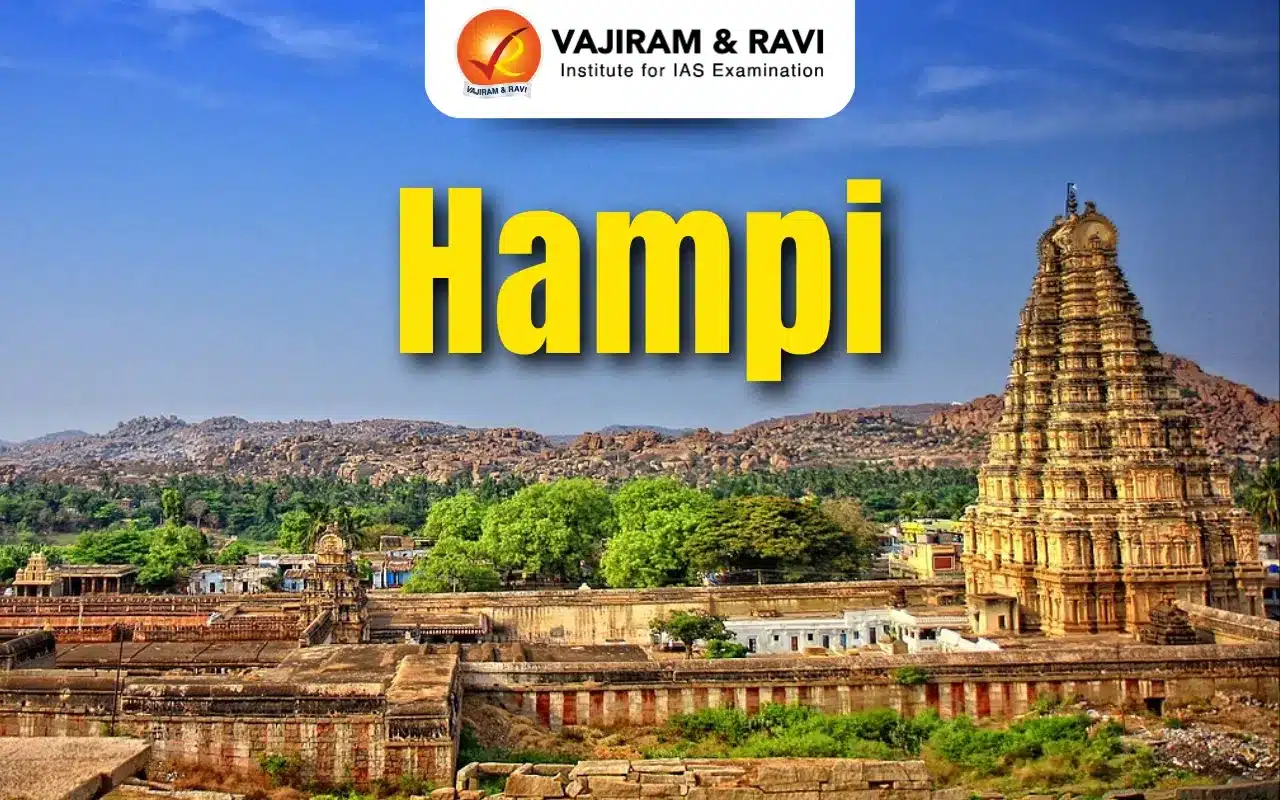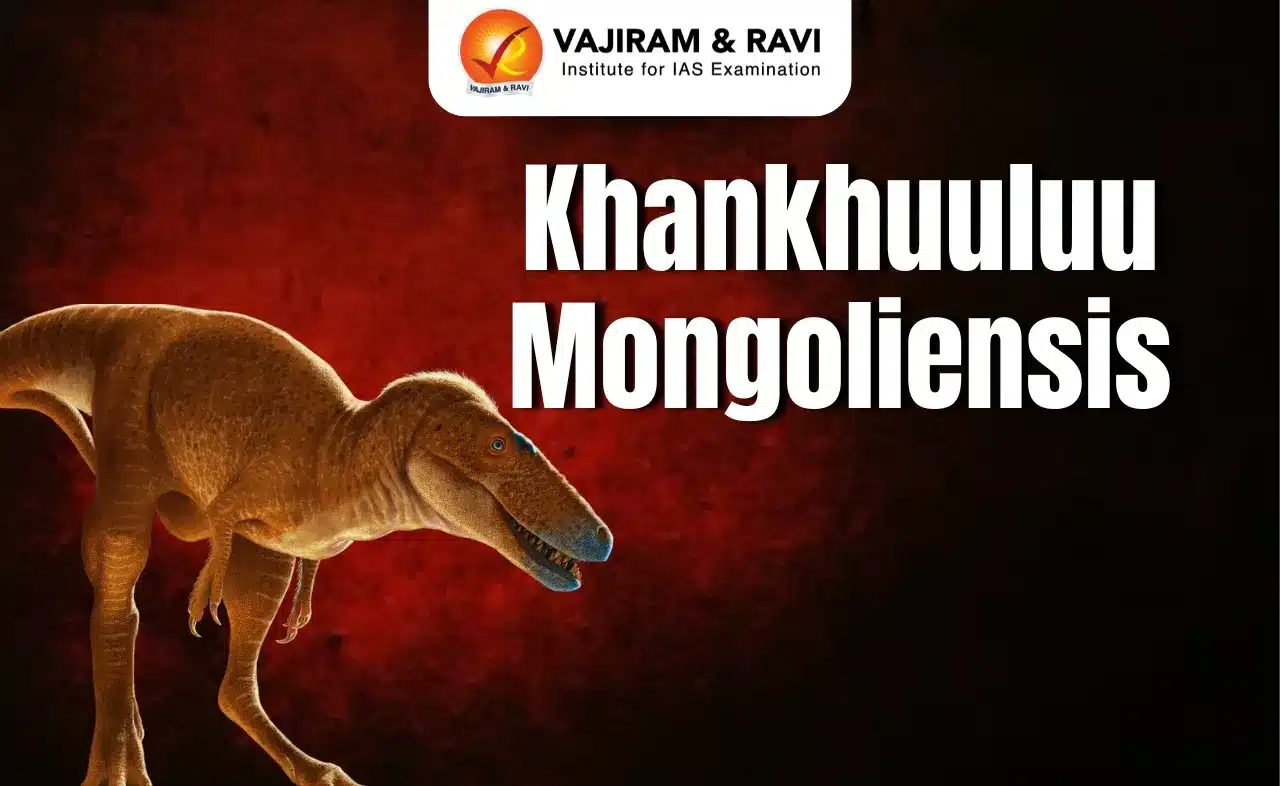Hampi Latest News
Recently, a mantapa at Virupaksha Temple collapsed due to heavy rain, sparking concerns over neglect.
About Hampi
- Hampi was the capital city of the Vijayanagara Empire, established in 1336 CE by Harihara I and Bukka Raya I of the Sangama Dynasty.
- Location: Traditionally known as Pampakshetra of Kishkindha, Hampi is located in central Karnataka on the banks of the Tungabhadra River.
- Foreign travellers like Domingo Paes described Vijayanagara as “as large and beautiful as Rome”, highlighting its architectural grandeur and prosperity.
- The empire fell in 1565 CE after the Battle of Talikota, where the Deccan Sultanates defeated Rama Raya, leading to mass destruction. The city reportedly burned for six months.
- Hampi remained forgotten until the late 18th century when British antiquarian Colin Mackenzie mapped it in 1799, creating the first cartographic records.
- Early photographs and restoration attempts were made by British officials like Alexander Greenlaw, showcasing colonial-era interest in Indian heritage.
- The first major conservation initiative, the Hampi National Project, was launched in 1976.
- Excavations revealed key sites such as the Vitthala Temple bazaar, Pushkarini (stepped tank), and Paan-supari bazaar.
- Prominent landmarks include the Virupaksha Temple, Lotus Mahal, Queen’s Bath, and Elephant Stables.
- Hampi was declared a UNESCO World Heritage Site in 1986, recognising it as one of India’s largest archaeological zones, covering 250 sq. km and housing over 1,600 monuments.
Hampi FAQs
Q1. Why is Hampi famous in Indian history?
Ans. Hampi was the capital of the Vijayanagara Empire, a UNESCO World Heritage Site known for its rich Dravidian architecture and historic significance.
Q2. Where is Hampi located?
Ans. Hampi is located in the Ballari district of Karnataka, India, along the banks of the Tungabhadra River.
Q3. Which dynasty is associated with Hampi?
Ans. The Vijayanagara dynasty ruled from Hampi, making it a key cultural and political center between the 14th and 16th centuries.
Source: IE
Last updated on June, 2025
→ UPSC Notification 2025 was released on 22nd January 2025.
→ UPSC Prelims Result 2025 is out now for the CSE held on 25 May 2025.
→ UPSC Prelims Question Paper 2025 and Unofficial Prelims Answer Key 2025 are available now.
→ UPSC Calendar 2026 is released on 15th May, 2025.
→ The UPSC Vacancy 2025 were released 1129, out of which 979 were for UPSC CSE and remaining 150 are for UPSC IFoS.
→ UPSC Mains 2025 will be conducted on 22nd August 2025.
→ UPSC Prelims 2026 will be conducted on 24th May, 2026 & UPSC Mains 2026 will be conducted on 21st August 2026.
→ The UPSC Selection Process is of 3 stages-Prelims, Mains and Interview.
→ UPSC Result 2024 is released with latest UPSC Marksheet 2024. Check Now!
→ UPSC Toppers List 2024 is released now. Shakti Dubey is UPSC AIR 1 2024 Topper.
→ Also check Best IAS Coaching in Delhi
Tags: hampi






















